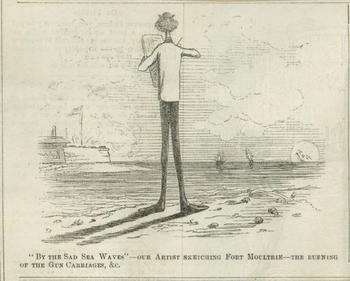Subproject 2: On the Border. Travelling Draughtsmen of the 16th– 19th Century under Suspicion of Espionage
Dr. Ulrike Boskamp
The subproject deals with accusations of spying levelled at travelling artists who sketched and drew in border regions within Europe and whose working practice and drawings found themselves objects of transcultural confrontation. With these charges, incidents of which are documented primarily in the art literature, the work of the artist is closely associated with the practice of military espionage: artists are imputed with a covert intention and their pictures with a military subtext. Such suspicions fall not only upon artists who are travelling abroad, but also those who are touring their own country and are accused of spying for a foreign power. The charge is followed in principle by a negotiation over the intention of the artist and the significance of his artistic works. The topical accounts of these incidents, partly in conjunction with the drawings upon which they centre, form a multi-faceted body of material that this subproject proposes to scrutinize both for its implications in the domain of visual theory and for its literary constructions of ‘art’ and ‘artist’.
Based on the work of the first research phase, the subproject is able to build upon a rich inventory of artist biographies, anecdotes and other sources. The historical material also makes it possible to investigate a key issue common to the research unit, insofar as the accusation of spying brings into play concrete historical negotiations over the function and meaning of (art)works and artistic practices in contact zones, i.e. between members of different European states. We shall also examine the transcultural translations that are negotiated in the accounts and anecdotes at multiple levels, first and foremost between different nationalities, but also between different visual cultures and social affiliations.


